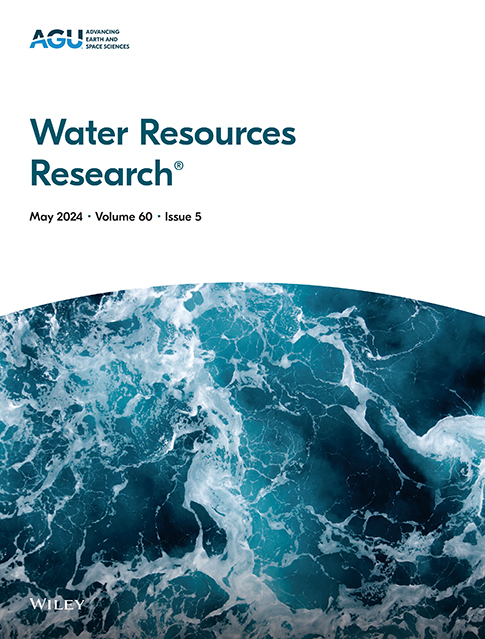DREAM(LoAX): Simultaneous Calibration and Diagnosis for Tracer-Aided Ecohydrological Models Under the Equifinality Thesis
IF 5
1区 地球科学
Q2 ENVIRONMENTAL SCIENCES
引用次数: 0
Abstract
The Limits of Acceptability approach has been demonstrated to be an effective conditioning tool due to its capacity to consider epistemic uncertainty. However, its application faces two challenges—the low efficiency when random sampling is used and the difficulty in setting limits prior to calibration. Here an algorithm DREAM(LoAX) was developed and added to GLUE framework. As an extension of DREAM(LoA) of Vrugt and Beven (2018), https://doi.org/10.1016/j.jhydrol.2018.02.026, it evaluates model performance based on limit boundaries, thus inherits the merits of the GLUE framework (explicit consideration of epistemic errors). Moreover, the importance of initial choice of limits is strongly reduced by allowing iterative evolution of limits based on historical model performance. By testing a series of examples (including a high-dimensional numeric example, a single-objective hydrological example, and a multi-objective hydrological example) with or without error-free assumption using synthetic or real observations, the search capacity of DREAM(LoAX) to locate acceptable models is demonstrated. The algorithm also shows comparable efficiency to DREAM and DREAM(LoA). More importantly, it provides real-time diagnostic information regarding when (at which timestep), where (for which objective), and how (to which direction and to which extent) the model fails when uncertainty is pronounced, allowing potential uncertainty sources in the data or flaws in the model structure to be identified. In this context, DREAM(LoAX) is not only a useful conditioning tool, but also a diagnostic and learning tool for development of improved modeling.DREAM(LoAX):等性理论下示踪剂辅助生态水文模型的同步校准与诊断
可接受性极限方法已被证明是一种有效的调节工具,因为它具有考虑认知不确定性的能力。然而,它的应用面临两个挑战:随机抽样时效率低和校准前限制设置困难。本文开发了DREAM算法(LoAX),并将其添加到GLUE框架中。作为Vrugt和Beven(2018)的DREAM(LoA)的扩展,https://doi.org/10.1016/j.jhydrol.2018.02.026,它基于极限边界评估模型性能,从而继承了GLUE框架的优点(明确考虑认知错误)。此外,通过允许基于历史模型性能的极限迭代进化,极大地降低了初始选择极限的重要性。通过测试一系列的例子(包括高维数值例子、单目标水文例子和多目标水文例子),使用合成或真实的观测数据进行无错误假设或无错误假设,证明了DREAM(LoAX)定位可接受模型的搜索能力。该算法的效率与DREAM和DREAM(LoA)算法相当。更重要的是,它提供了实时的诊断信息,关于何时(在哪个时间步),在哪里(为了哪个目标),以及当不确定性被宣布时,模型是如何(在哪个方向和程度上)失败的,允许识别数据中潜在的不确定性来源或模型结构中的缺陷。在这种情况下,DREAM(LoAX)不仅是一个有用的调节工具,也是一个用于开发改进建模的诊断和学习工具。
本文章由计算机程序翻译,如有差异,请以英文原文为准。
求助全文
约1分钟内获得全文
求助全文
来源期刊

Water Resources Research
环境科学-湖沼学
CiteScore
8.80
自引率
13.00%
发文量
599
审稿时长
3.5 months
期刊介绍:
Water Resources Research (WRR) is an interdisciplinary journal that focuses on hydrology and water resources. It publishes original research in the natural and social sciences of water. It emphasizes the role of water in the Earth system, including physical, chemical, biological, and ecological processes in water resources research and management, including social, policy, and public health implications. It encompasses observational, experimental, theoretical, analytical, numerical, and data-driven approaches that advance the science of water and its management. Submissions are evaluated for their novelty, accuracy, significance, and broader implications of the findings.
 求助内容:
求助内容: 应助结果提醒方式:
应助结果提醒方式:


